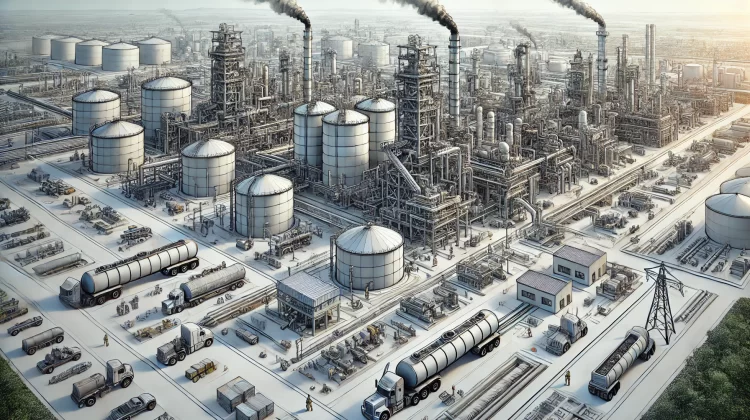
- Client :
- Category :Fluid Library
- Project Url :
- Date :February 4, 2025
The Challenge
This project involved the operations of a facility specializing in used cooking oil (UCO) recycling. The facility processes UCO collected from food service establishments and refines it into recycled vegetable oil while managing byproducts like fats, solids, and waste water. The objective was to develop a model as a proof of concept to test the current schedule of trucks arriving to unload raw UCO, trucks responsible for transporting settled water to waste water treatment plants, and tanker trailers responsible for transporting the processed oil to clients.
The facility’s operations include multiple processing stages: filtration of solids, settling of oil and water, heating and separation of fats, and centrifugation for final purification. Each stage has different processing times, tank capacities, and operational constraints.
The Solution
A simulation model was built in AnyLogic to replicate the entire facility’s UCO recycling process, using the fluid library. The process modeling library was used to simulate the trucks arrival/loading/unloading processes. The model accounted for key operational elements, including:
- Vacuum Trucks arrival and Unloading: The arrival of trucks was simulated to study waiting times at the unloading stations.
- Filtration & Settling: The flow of UCO through filtration and settling tanks was modeled to determine optimal processing rates.
- Fat Heating and centrifugation: The separation of oil, water, and solids was simulated to analyze processing times and tank utilization.
- Tanker Trailer Loading: The arrival of trucks was simulated to study waiting times at the loading stations as well as different tanks storage capacities.
To ensure flexibility, the operational parameters were dynamically configured using an Excel-based input system, allowing for rapid experimentation with different process setups.
Results
For each scenario, the user was able to export information related to the tanks and the trucks which can be used to do the needed analysis and deductions. The information related to the trucks included, but not limited to:
- Truck arrival time
- Truck type
- Truck load utilization
- Truck departure time
As for the tanks, the information below was exported at the departure instances of any of the trucks:
- Amount of fluid in tank
- time
This project is a small example on something that can be done quickly to gain visibility, trust or funding for a larger project.


